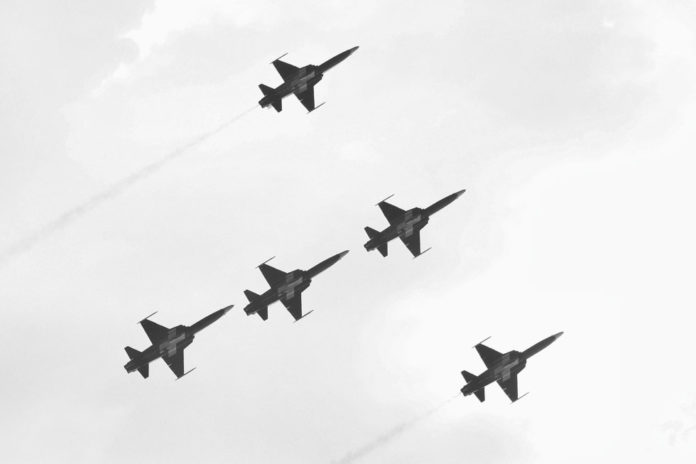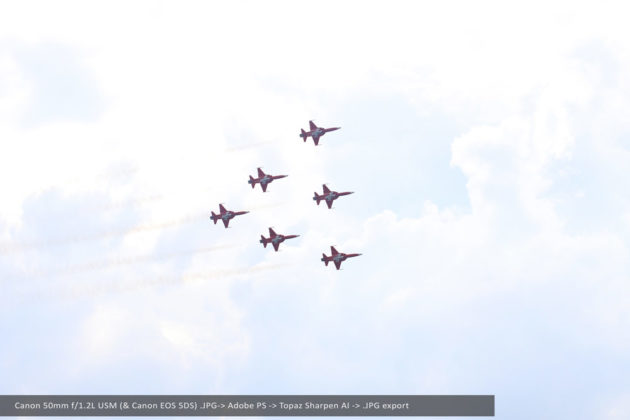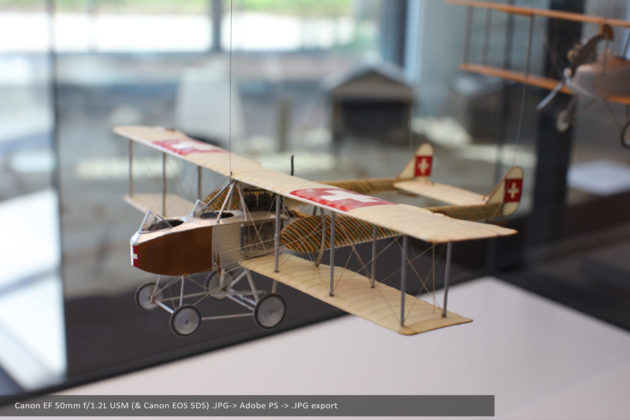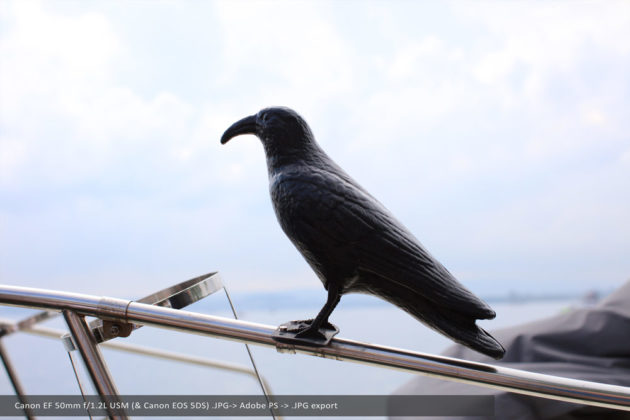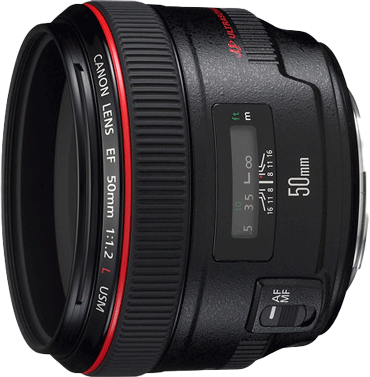Lens overview
Announced in the mid‑2000s, the EF 50 mm f/1.2L USM was Canon’s answer to a fast, professional “normal” with autofocus and weather sealing. On paper, it’s straightforward: 8 elements in 6 groups (including an aspherical element), f/1.2–16, 0.45 m minimum focus, 0.15× magnification, 72 mm filters, ≈ 85.8 × 65.5 mm, and ~580 g. In the hand, it’s compact for a red‑ring fifty, balances well, and feels purpose‑built for portraits, events, and low light—exactly where a 50 / 1.2 should live. Canon Museum
Build and ergonomics
The 50mm f/1.2L is solid, sealed, and quick to use. Ring‑type USM brings fast, quiet AF with full‑time manual override; the focus ring has just enough damping to make minor corrections precise. The lens takes the ES‑78 hood and benefits from a protective front filter to complete its weather‑resistance. It’s not heavy by L‑standards and sits comfortably on both DSLRs and adapted mirrorless bodies.
Optical performance
Sharpness & contrast. At f/1.2, you’re here for the look: a crisp core with a gentle halo on skin tones and a decisive fall‑off into blur. Stop to f/1.8–2.2 and micro‑contrast lifts; by f/2.8, the frame tightens significantly while keeping that L‑series color and punch. It’s not a laboratory flat rendering like some modern 50s; it’s a portrait‑friendly drawing with intention.
Bokeh & rendering. The 8‑blade circular diaphragm keeps speculars rounded, with smooth transitions that flatter faces and isolate details in ambient light. Cat’s‑eye shapes appear toward the corners at f/1.2 (normal at this speed). Backgrounds melt; highlights glow enough to feel cinematic without turning nervous.
Chromatic aberration & focus shift (what to expect). Wide open, expect axial CA (magenta/green fringing) on hard edges (jewelry, chrome, highlights). It eases rapidly at f/2–2.8 and responds well to a quick Remove CA/Defringe pass in your RAW editor. More importantly, this optical design exhibits focus shift at close distances when you stop down from the focusing aperture (most AF systems focus wide open, then the lens stops down to take the shot). Practical cure: either shoot at the aperture you focused at (e.g., focus and shoot at f/1.2) or, if you intend to shoot f/2–2.8 at near‑MFD, bias focus slightly forward / review and adjust. On mirrorless bodies, on‑sensor AF plus magnified MF or Focus Guide makes learning the lens’s rhythm much easier.
Flare, distortion & vignetting. With coatings and the hood, flare is generally well controlled; shoot with intent around point light sources. Geometric distortion is minimal. Vignetting is strong at f/1.2 (part of the signature) and recedes quickly as you stop down; in‑camera/RAW profiles handle it cleanly if you prefer neutral corners.
Digital adaptation (today’s bodies)
On the EOS R‑series, the lens can be used with the EF‑EOS R adapter, providing full AF, EXIF, and aperture control. Bodies with IBIS stabilize the lens effectively (the 50mm 1.2L has no IS), and Focus Guide/peaking help you ride the razor‑thin DoF at f/1.2. If you use eye‑detect AF for people, the 50mm 1.2L suddenly feels more “native” than it ever did on DSLRs—the hit rate improves and the character shines.
Historical & collector context
In Canon’s fifty lineage, this lens sits between the legendary (and rare) EF 50 mm f/1.0L and the modern RF 50 mm f/1.2L. The EF 50 1.2L brought speed, sealing, and AF to the pro fifty slot in 2006/2007, and it’s been a favorite for wedding and reportage shooters ever since. Compared with the RF 50 mm f/1.2L, the EF version is smaller and lighter, has fewer blades (8 vs 10), focuses a bit farther (0.45 m vs 0.40 m), and shows more LoCA / focus shift—but it also has a distinctive, flattering wide‑open draw that many still seek out. If you’re after apochromatic discipline and clinical micro‑contrast at normal focal length, our Otus 55 mm f/1.4 review shows what the other end of the spectrum looks like; if you’re after speed‑with‑soul and autofocus, the EF 50mm 1.2L still makes a compelling case.
Impressions
Use f/1.2–1.6 when you want that signature separation and glow; place your plane just in front of the near eye at portrait distance and let the rest breathe. Indoors and at dusk, the lens rewards ambient‑light storytelling—think hands, faces, and practical lights. For a more modern bite, f/2–2.8 keeps the character while adding definition. On the R5/R6, combine eye‑detect with a quick magnified check when depth must be perfect; in fast-moving sessions, shoot a short burst to hedge micro‑movements and focus shift at close range.
Comparison
Zeiss Otus 55 mm f/1.4 (Apo‑Distagon). Manual‑focus, heavier, and apochromatic. If you prioritize edge discipline and micro‑contrast above all else and can live without AF, the Otus is a different, more exacting experience.
RF 50 mm f/1.2L USM. Faster AF, 10‑blade diaphragm, closer focus, higher uniformity, and much stronger CA control—bigger and heavier too. If you shoot wide open in bright conditions and demand clinical precision, RF wins; if you want a smaller, character‑forward fifty with AF, EF 50mm 1.2L is still relevant and now price‑efficient.
Sample photos
Verdict — Pros and Cons
Pros
• Distinctive f/1.2 rendering with flattering skin tones
• Ring‑USM AF, compact L‑build, weather sealing (complete with front filter)
• Excellent on R‑series: IBIS + eye‑AF boost keeper rate
• Price‑efficient in 2025 compared with RF alternatives
Cons
• Focus shift at close distances when stopping down from the focusing aperture
• LoCA / purple fringing wide open in hard light
• Strong vignetting at f/1.2 (artistic, but visible)
• No IS; relies on IBIS for stabilization on mirrorless


